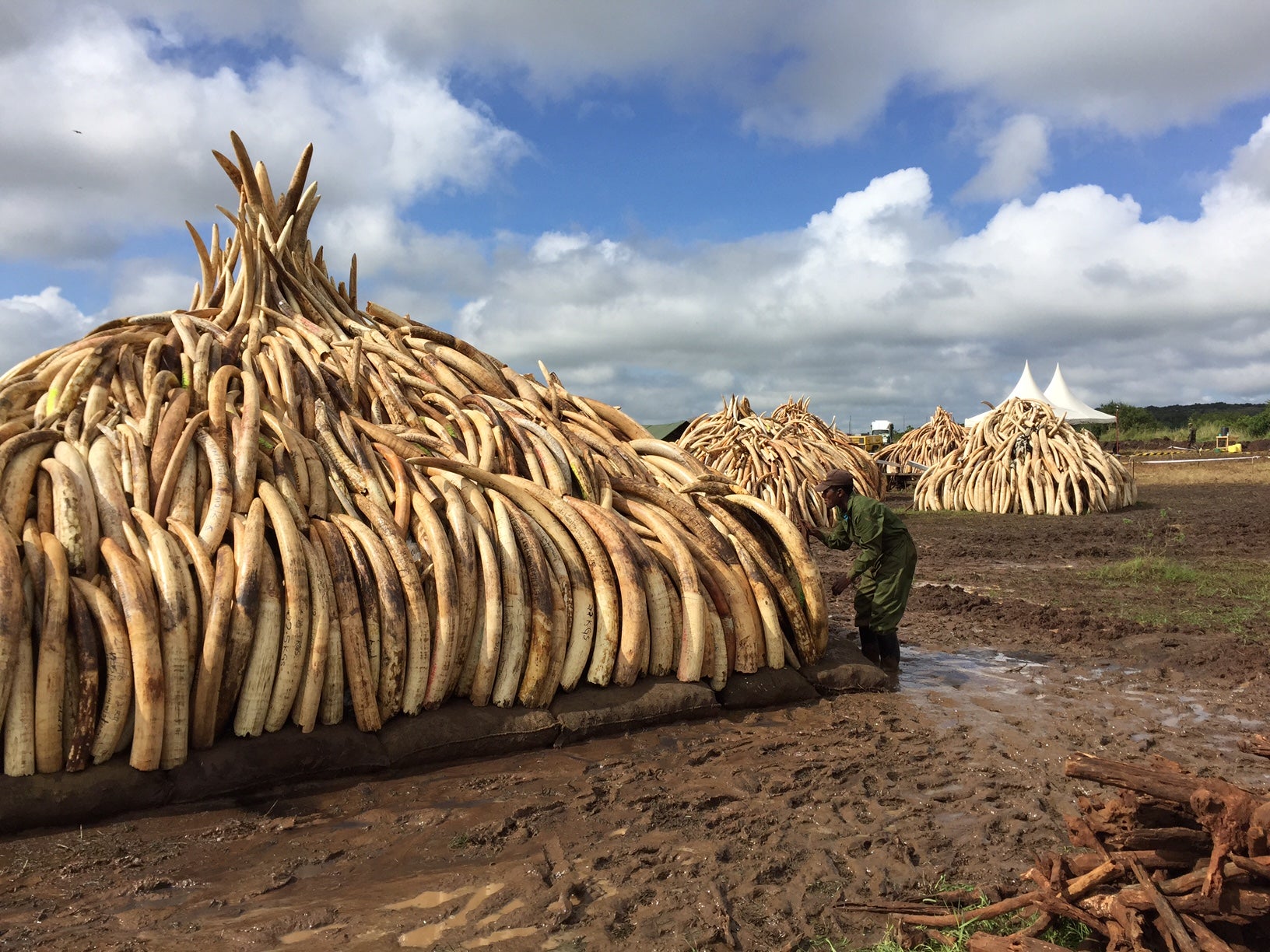Kenya setting an example to the world with historic ivory burn
On Saturday, as Kenya burns over 100 tonnes of poached ivory, the world will witness a powerful expression of Africa's commitment to halting the illegal trade decimating the continent's elephants

This Saturday, after the Giants Club Summit, the government of Kenya will burn 105 tonnes of ivory and 1.5 tonnes of rhino horn. The looming pyres of white and yellow already stand silently waiting on the sodden ground of Nairobi National Park. Grim, depressing, awe-inspiring, these mountains of elephant teeth, testament to the loss of thousands upon thousands of the majestic big beasts, provoke a visceral reaction.
Burning the ivory is Kenya’s logical, progressive and robust approach to securing its natural heritage, led in person by the President under the watchful eye of Dr. Richard Leakey, legendary conservationist and palaeontologist and current Chair of the Kenya Wildlife Service (KWS). For the international community, it demonstrates Kenya’s commitment to put its ivory beyond economic use in line with the African-led Elephant Protection Initiative (EPI). It also embodies the growing, common and unequivocal message from across Africa: true value lies with living elephants not cold ivory.
Look a little closer, however, and you will notice that every tusk, section, statue and bangle is indelibly marked with its own code. Each piece – over 25,000 of them – painstakingly uniquely identified and accounted for: first “KWS” for Kenya then the park or port and date of registration, serial number, and weight.
Last year, KWS launched a collaborative initiative to inventory its ivory – accumulated since before the 1989 international trade ban. Co-funded by Elephant Protection Initiative Secretariat Stop Ivory and Kenyan NGO Save the Elephants, this bold step applied state of the art technology developed by Stop Ivory, to identify and record each piece – including photographs - onto an electronic database. It took six weeks of hard, sweaty and grizzly work carried out diligently and exactingly by government, private sector and NGO teams, including students from Nairobi Technical College.
Some pieces you will see have a neat square the size of a kitchen box of matches cut out at the base. A selection from the whole stock has had samples cut out – from where the tusk was rooted in the jaw – for DNA analysis. A critical new technique in law enforcement around large scale seizures of ivory (measured at over half a ton), this technique not only saves the DNA record of these ghostly herds for posterity, but will also inform government and partners on poaching and trafficking patterns.
The results were interesting. First, KWS found that it held more ivory than it thought it had: finally dispelling long-made and dogged allegations of corruption, thefts and cover-ups on a grand scale. Yes, things were not perfect: the challenge of maintaining such a haul of wildlife products had overwhelmed the outdated systems and storerooms. But strong relationships of trust were built, and a new confidence to move forward developed.
With every piece individually catalogued on a central database and a new sense of confidence, the partnership has moved all of the ivory to Nairobi from across the country; accounted for piece by piece. The inventory and new system have allowed a robust chain of custody to ensure every piece checked out in the field has been checked in in Nairobi and onto a pyre.
As the smoke clears on 1 May, and the rain washes the ash into the African soil, returning the final remnants of these elephants to the earth, we should have hope in our hearts. Kenya will look to a future with elephants, knowing that despite huge external pressures it can overcome the corruption of the illegal ivory trade. We should take her hand and follow her example.
To find out more about The Giants Club Summit go to: http://spaceforgiants.org/giantsclub/summit. To donate go to: http://spaceforgiants.org/giantsclub/donate/

Join our commenting forum
Join thought-provoking conversations, follow other Independent readers and see their replies